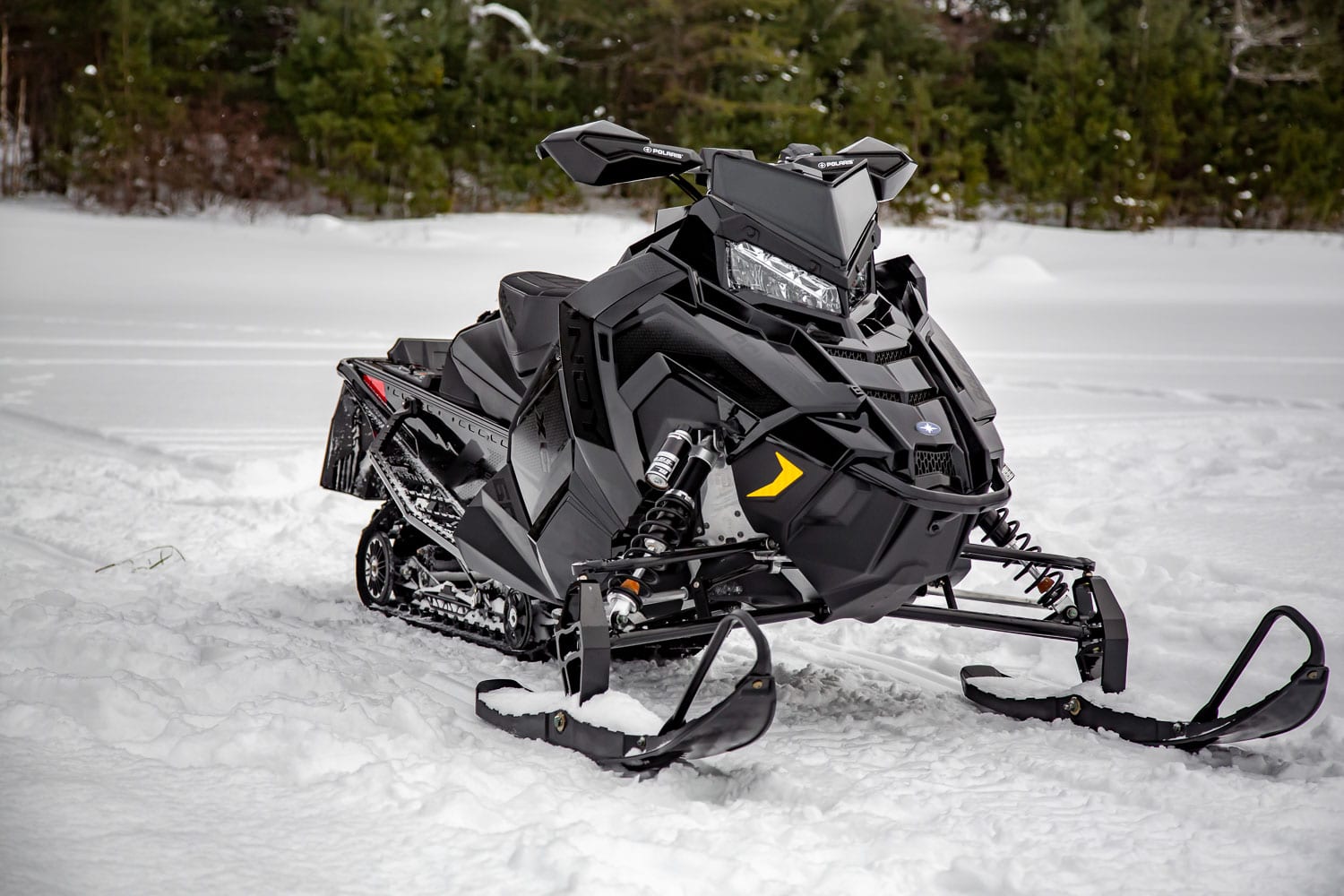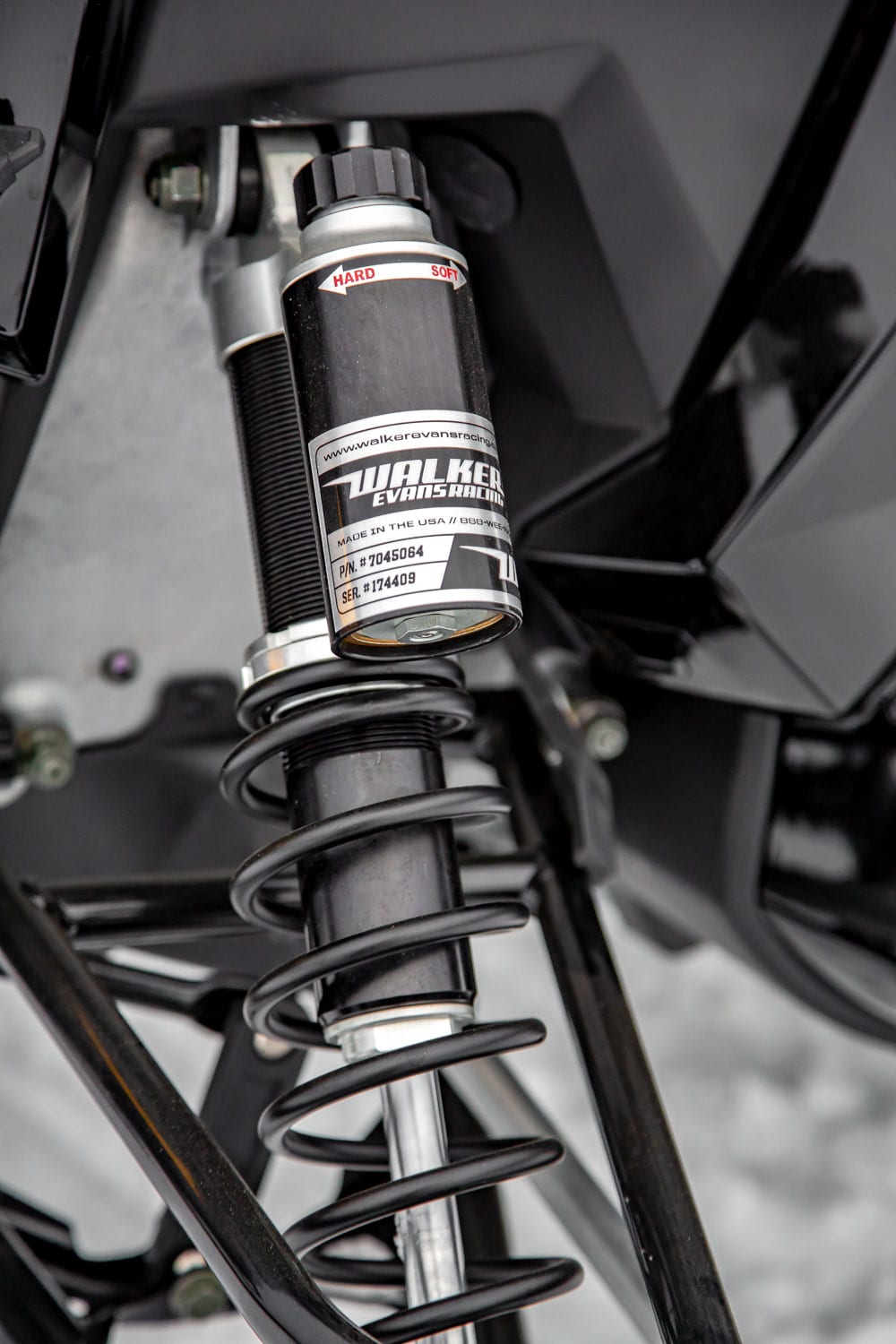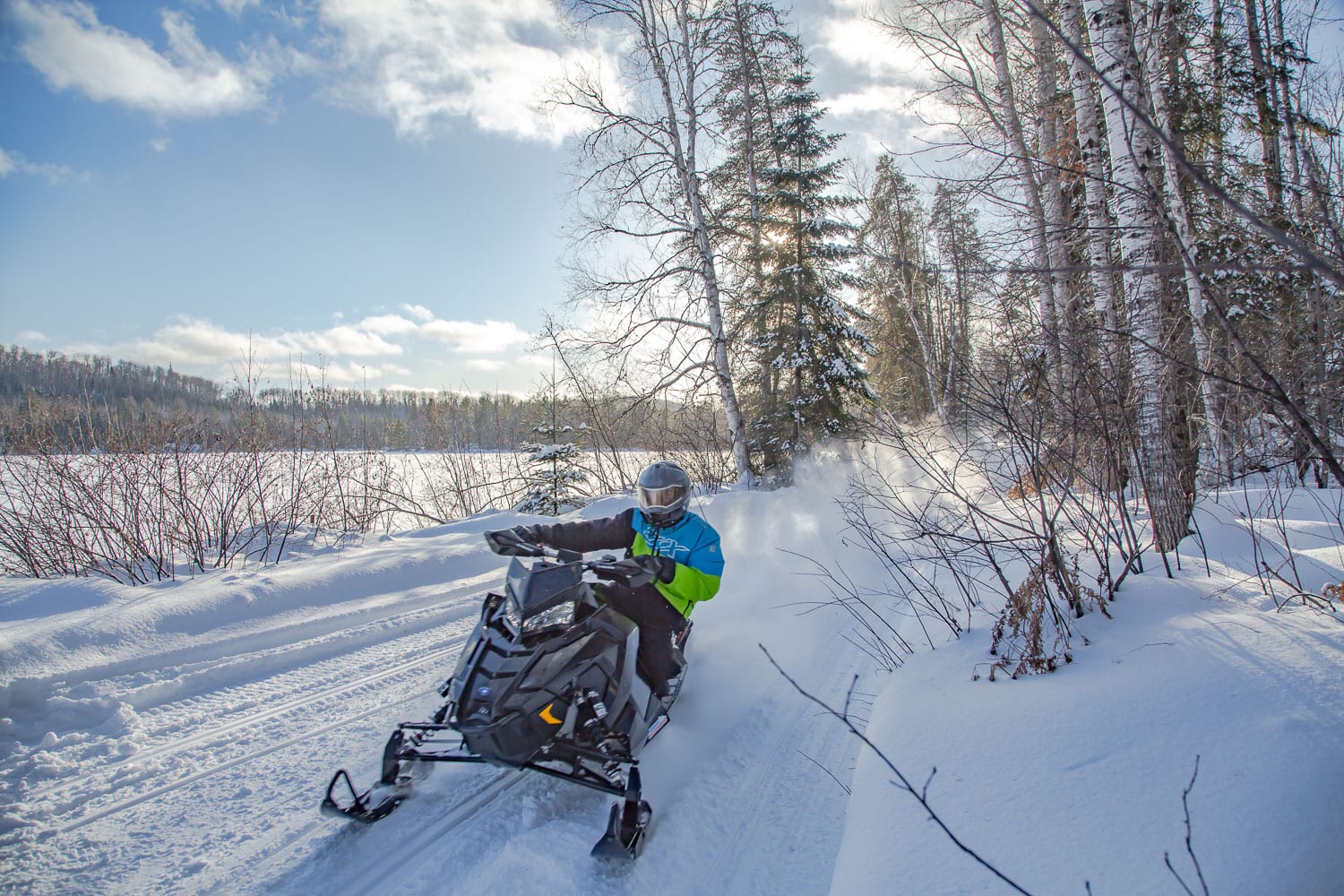It’s interesting to see how the manufacturers have gone in different directions over the years. For the past few years, Polaris has been very quiet when it comes to new products. But in the last two years or so, we’ve seen the arrival of several innovations that have charmed the consumer. The arrival of the Titan, a work snowmobile, has definitely re-launched the American manufacturer in its conquest of the snowmobile market.
2019 ensures continuity in this vein with the arrival of the new 850 Liberty engine, completely redesigned to ensure an excellent combination of power and reliability. At the time of writing, this one is getting high marks from consumers who have purchased it.
The second novelty could also be a comeback, because Polaris has had great success in the past with suspension geometries similar to those introduced on the XC 129. The XLT versions, among others with the Extra 10 and Extra 12 in the 90’s, were recognized at the time as excellent suspensions, comfortable and performing.

Our long-term test car is a Polaris Indy XC 129 with the 600 CC engine. Although we were not able to get an 850 version, we are still able to evaluate this new suspension and the behavior it can offer in combination with the AXYS platform.
Suspension PRO-CC
Let’s get right to the heart of the matter, the key question: does this suspension deliver the goods? The answer is YES in capital letters please. The concept of this new suspension is very similar to many suspensions on the market, the first major point is without a doubt the notion of adjustable coupling that is back, a point that is non-existent on the versions equipped with the Pro-XC suspension. Thanks to the possibility of adjusting the weight transfer, it is now easy to adjust the reach of the skis on the ground during acceleration or exit of a turn according to your taste. How to do it? Just do a few tests by turning the transfer blocks located near the rear wheels of the suspension. By rotating the blocks to increase their thickness towards the front, that is to say to decrease the space between the block and the pivot arm, you decrease the weight transfer, and the snowmobile will keep the skis on the ground during acceleration and, by the same token, offer a better stability when exiting a turn. After testing it, it is really effective. Personally, I prefer a suspension that keeps the skis welded to the ground at all times, so I took the time to adjust the blocks in a position that allows the least amount of weight transfer possible and the result is almost perfect… The little stall that we saw with the Pro-XC suspension disappeared completely. The skis remained completely nailed to the ground, which facilitates acceleration out of turns and greatly improves the stability of the vehicle. When will we see a 137 version?

Walker Evans
The Pro-CC suspension is equipped with Walker Evans external barrel shocks with a 2-inch diameter adjustable compression. These shocks have a proven track record and a wide range of adjustment. These shocks are designed for heavy duty service, and have a relatively high range of stiffness, so for a little less resistance in small bumps, it is best to unscrew the valve that modifies the internal resistance of the shock, this will give it more flexibility and the snowmobile becomes more enjoyable in small bumps.
If you look at the front suspension, you’ll also find Walker Evans compression adjusters. In more aggressive riding, I kept the compression adjustment at about half its full capacity. This allows for better stability in turns and prevents the nose from dipping too far outward, causing what is commonly called “ski lift” or inside ski lift. The skis are single-slope with a very aggressive keel. The only point of improvement is to reduce the swaying which is felt in deceleration.

Performance
The Polaris 600 CC has always delivered outstanding performance for its size, and 2019 is no exception. Acceleration is as amazing as ever, there’s no hesitation during mid- and high-rpm pickups. At very low rpm or during a standing start, the clutch calibrations push a lot, which leaves the impression that the engine forces, slightly lacks revolution and can’t deliver full power, but it’s a fraction of a second before reaching its full potential.
On the accessory side, the control knob for the heated grips and thumbs is relatively easy to use despite their small size. The instrument panel is well positioned for easy reading from a seated position and provides all the relevant information for the rider. Ergonomically speaking, the rider’s position is comfortable in a relaxed position, and the strong point of this chassis in my opinion is when you decide to push the machine a bit more for aggressive riding, the narrowness of the fuel tank makes it easy to switch from left to right, in combination with the height of the handlebars, it is very easy to get out of the bike completely when taking aggressive turns to keep a good stability.

The front trunk is relatively small, but it is perforated to let in some heat from the engine, which is interesting for cell phones. The rear trunk is very large, and allows for the storage of several personal belongings. Although we didn’t test it, it seems to be perfectly waterproof.
Auxiliary bench
Our Indy XC 129, comes with an extra bench to bring along a passenger, heated grips and an electric visor socket. Well designed, the seat is long enough to allow the passenger to stay well in place, even for people of good height. The backrest is the right height and is very comfortable. The hand position is a bit backwards, but it’s not uncomfortable, and the hands are well protected via integrated guards. The concept of clips to install or remove the seat is very effective and easy to use. Small note: for two people, there is a good chance that you’ll have to change the rear springs, which lack strength with over 250 pounds on the car.
There is no doubt that this new suspension will be all the rage in the next few years: comfort, stability and performance are all there, why not a 137 version for 2020?





